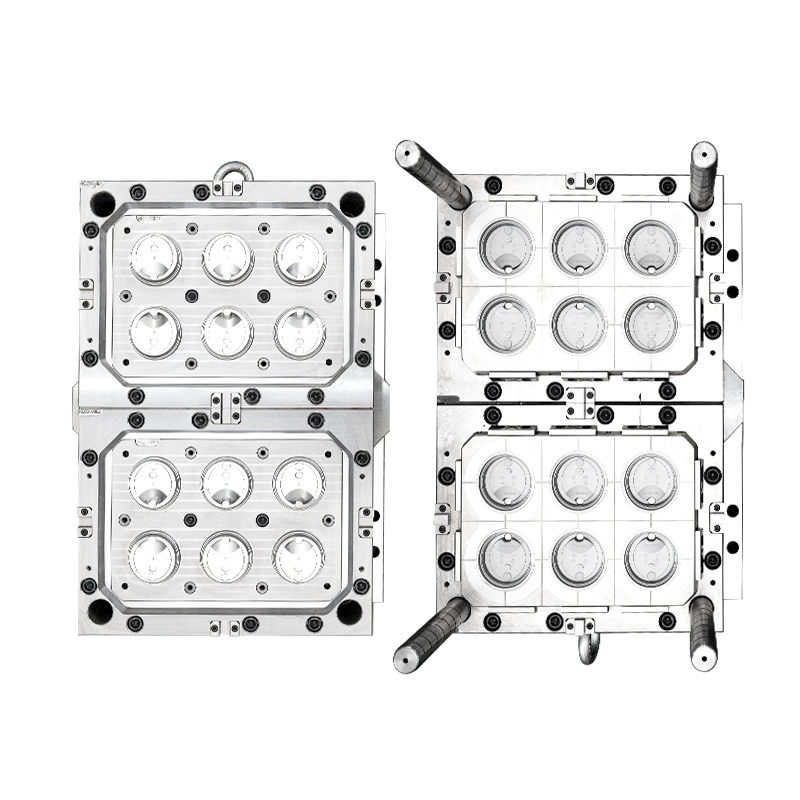Engineering Security: The Design Philosophy of Anti-theft Structure Container Injection Mould

The development of an anti-theft structure container injection mould represents a specialized application of plastic manufacturing technology where mechanical function and security features converge. This category of container injection mould goes beyond simple containment to incorporate integrated locking mechanisms that resist unauthorized access. The fundamental purpose of such a mould structure is to produce plastic components with structural complexities that prevent tampering while maintaining efficient manufacturability. Every aspect of the mould design must consider both the ergonomic needs of legitimate users and the barriers presented to potential tampering. The engineering challenge lies in creating a container that is straightforward to assemble yet difficult to disassemble without specialized knowledge or tools. The initial concept phase for this injection mould requires extensive planning to identify potential failure points in the security system and address them through physical design. The mould structure becomes the physical embodiment of this security strategy, translating theoretical protections into tangible product features.
Creating the security features within an anti-theft structure container injection mould demands sophisticated engineering approaches. The mould cavity must form components with interlocking elements that snap together permanently during assembly. These often include living hinges, barbed fittings, and directional assemblies that allow movement in one direction but prevent reversal. The mould design frequently incorporates angled surfaces and undercuts that require specialized mould structure components like lifters, sliders, or collapsible cores to properly form and release the plastic part. These moving elements within the injection mould must operate with precise timing and alignment to ensure consistent formation of the critical security geometries in every production cycle. The gating system in such a container injection mould requires particular attention, as gate location affects material flow around these complex features, influencing structural integrity and cosmetic appearance. Venting placement is equally crucial to prevent air traps that could compromise the formation of fine security details in the mould cavity.
The selection of appropriate materials for both the mould structure and the final plastic product significantly impacts the performance of anti-theft containers. The mould core and cavities are typically manufactured from hardened tool steels capable of withstanding the abrasive nature of engineering-grade polymers while maintaining sharp, precise edges on security features over hundreds of thousands of cycles. For the container itself, material choices lean toward polymers with good impact resistance, dimensional stability, and limited flexibility, such as polycarbonate, ABS, or specialized copolymers. These materials must withstand attempted forced entry without fracturing while maintaining the integrity of the locking mechanisms. The mould design must account for the specific shrinkage characteristics of the chosen polymer to ensure that critical security dimensions remain within tolerance after cooling. The interaction between material properties and mould structure is a fundamental consideration that influences both the security performance of the final product and the durability of the injection mould tooling itself.
Manufacturing consistency is paramount in the production of anti-theft structure container injection mould, as variations in the manufacturing process could compromise security effectiveness. The injection mould must maintain extreme precision throughout its operational life, forming identical components with each cycle. Process parameters including injection pressure, packing pressure, cooling time, and material temperature must be rigorously controlled and monitored. Automated inspection systems often verify critical dimensions of ejected parts, ensuring that any deviation from specifications is detected immediately. The maintenance regimen for an anti-theft structure container injection mould is more intensive than standard tooling, with frequent cleaning and inspection of the complex moving components that form the security features. The mould structure requires regular verification of alignment and wear, particularly on components that create the delicate interlocking elements of the container. This diligent approach to manufacturing and maintenance ensures that every unit produced from the mould cavity provides consistent protective performance, maintaining the security standard that defines the product's purpose from the first part to the last.




